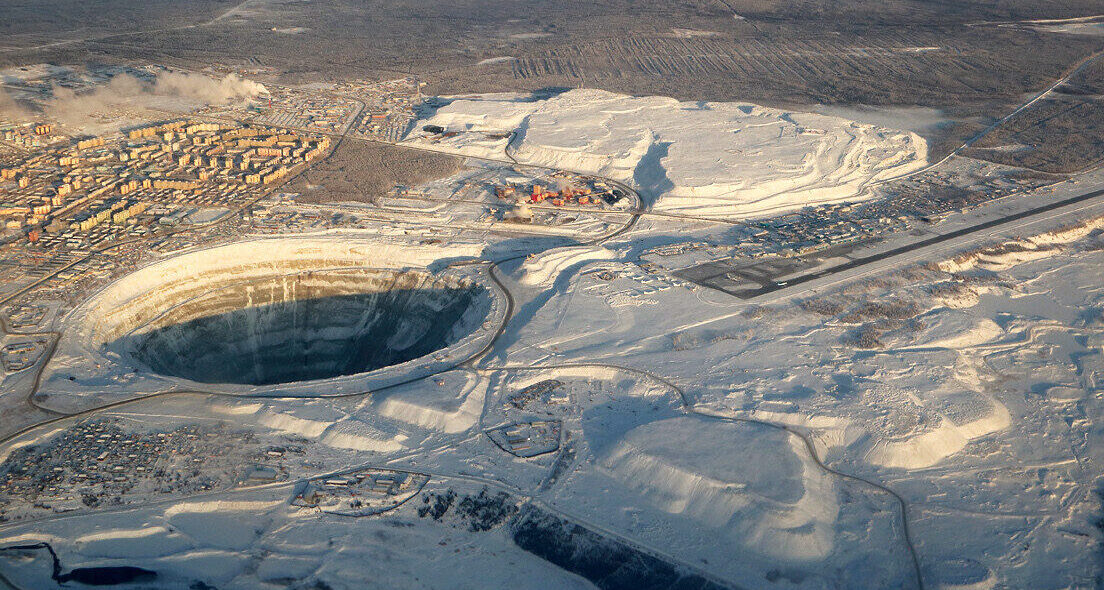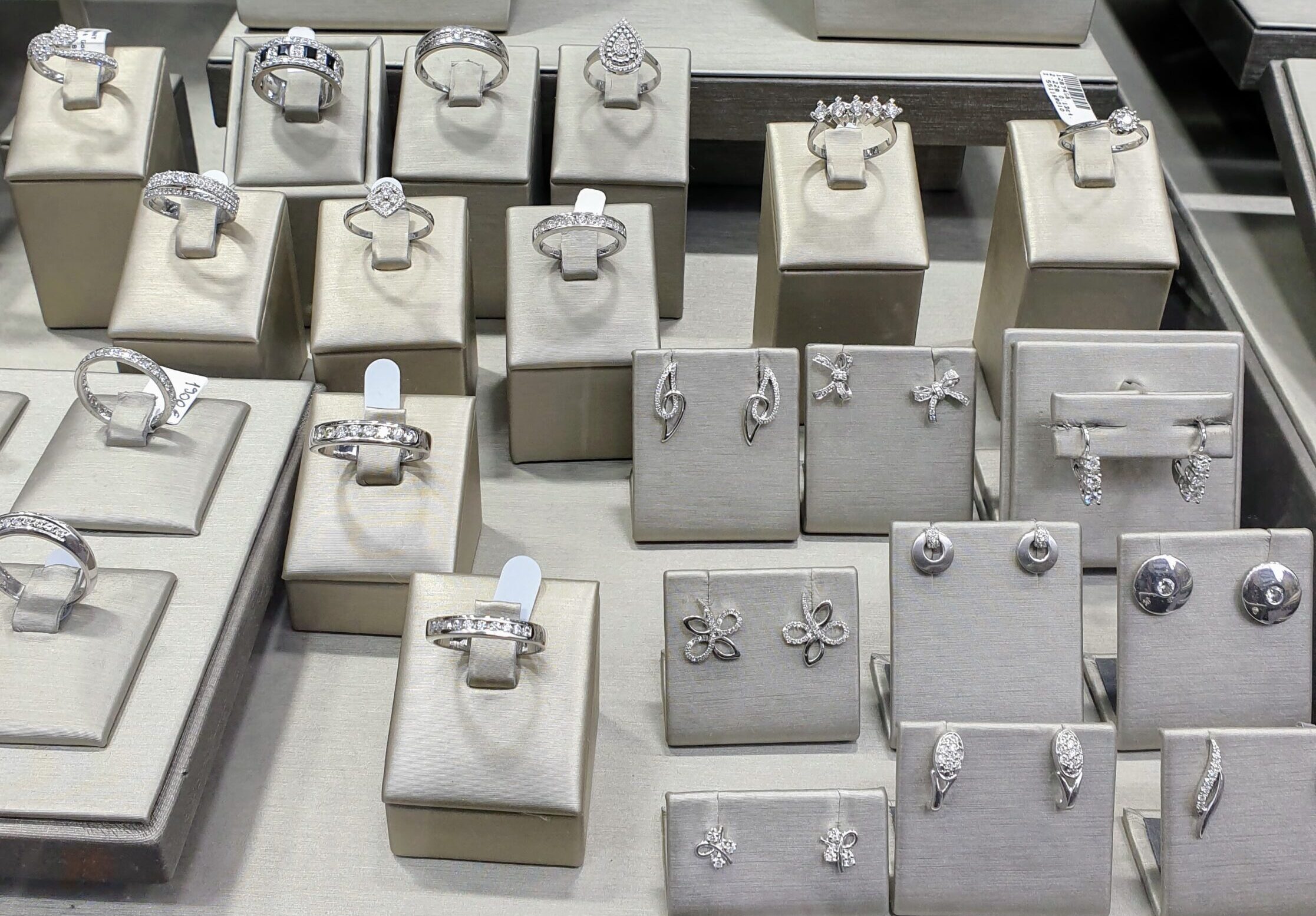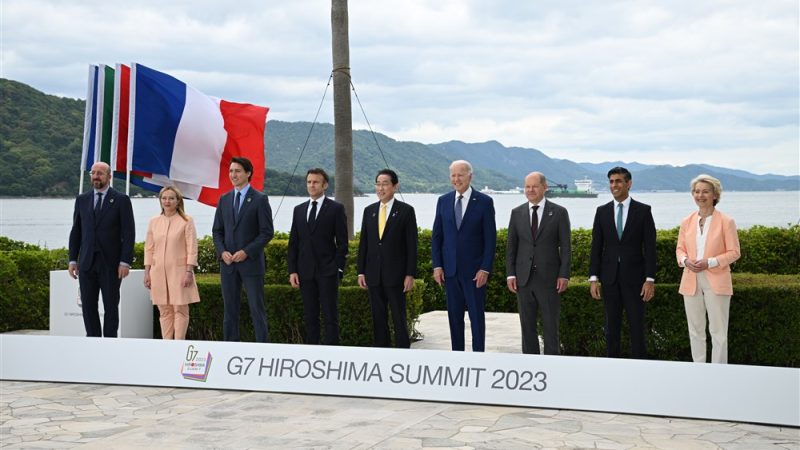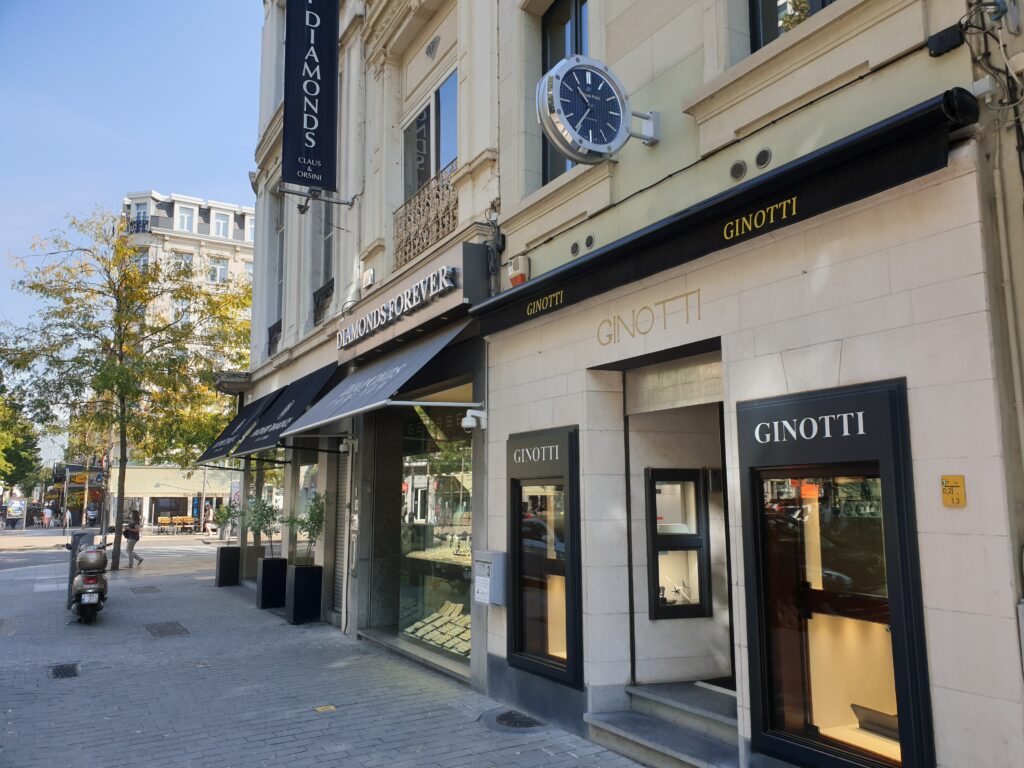Russia’s invasion of Ukraine, which began on February 24, 2022, has led to an unprecedented proliferation of economic sanctions designed to hit Russia’s economy and drain the resources of the Russian war chest. Among these are efforts to ban Russian diamonds from Western markets. Early October, at a meeting in Brussels with Ukraine’s President Zelensky, Belgian Prime Minister de Croo stated that the EU and G7 countries were close to agreeing on the terms of coordinated regulatory measures to track and ban Russian rough and polished diamonds. In this Q&A, IPIS answers key questions pertaining to Russian diamonds, proposals to ban them, the role of Belgium, and the potential impact of these measures on artisanal diamond miners.
Russian diamonds – context
How important are diamonds to the Russian economy?
Russia is the world’s largest diamond producer by volume. A third of the world’s current diamond supply comes from Russia’s Siberian mines. Over 90% of these diamonds are produced by a single company, Alrosa, two-thirds of which is owned by Russian government entities (one-third by the Russian Federation and another third by the Republic of Sakha (Yakutia)). In the first half of 2023, Alrosa generated a revenue of 188.2 billion rouble (approximately 1.9 billion EUR). This revenue translates in substantial financial flows to the Kremlin, through dividends and taxes.
While small compared to Russia’s oil and gas sector, which generated 739.9 billion ruble (7.4 billion EUR) in the month of September 2023 alone, revenues from diamond mining become increasingly important – both effectively and symbolically – as it remains one the few Russian industries unaffected by sanctions.
How has Russia’s diamond sector been impacted by the war against Ukraine?
So far, Russia’s diamond industry does not appear to have been impacted much by the war in Ukraine or the growing international controversy over Russian diamonds. Despite sanctions imposed by the United States, which is the main consumer market for diamonds globally, Russia’s rough diamond exports fell by only a few percentage points in 2022 (from a total value of 3. 78 billion EUR in 2021 to 3. 63 billion EUR for the year 2022).
This is a linked to the absence of diamond traceability. US sanctions only apply to Russian rough diamonds or those that have been cut and polished in Russia. The large majority of Russian diamonds are – like over 90% of the global diamond supply – cut and polished in India. Under the US sanction regime they are from that moment considered as Indian diamonds and can freely enter their market.
Such loopholes have been at the center of calls for stronger international coordination and the establishment of robust traceability requirements. The United States has the main consumer market for diamonds. The EU is, with Antwerp, home to the world’s largest diamond trading hub. If they work together, they have considerable leverage over the rest of the supply chain to close such regulatory gaps, and take an important leap towards responsible diamond governance.
Sanctions on Russian diamonds and traceability
What is the G7 initiative?
“In order to reduce the revenues that Russia extracts from the export of diamonds, we will continue to work closely together to restrict trade in and use of diamonds mined, processed or produced in Russia and engage with key partners with the aim of ensuring effective implementation of future coordinated restrictive measures, including through tracing technologies.”
The plan still appears to launch a coordinated G7 approach to trace and ban Russian diamonds early 2024. Consequently, more details on how this is going to be put in practice are expected in October or November.
What is traceability?
Traceability essentially means that a diamond is tracked from the moment it is mined, through its numerous transactions and transformations, until it is sold to the end consumer. In other words, it is an effort to ensure that documentation of a diamond’s origin, characteristics and ownership is maintained throughout the supply chain. This is something that does not exist sector-wide today. Unlike other products such as coffee, chocolate or seafood that are sold with origin information, a jeweler will generally not be able to tell you where a diamond is from.
In the context of this G7 initiative, sanctions serve to block the main access for Russian diamonds to Western markets, while traceability seeks to reduce the chances of circumvention. Without traceability it will remain easy to obfuscate the origin of Russian diamonds by mixing them with production from other countries in a trading hub like Dubai, or by cutting and polishing them in India.
Isn’t this what the Kimberley Process Certification Scheme (KPCS) was designed to do?
While often portrayed as such, the KPCS is not a traceability mechanism. In its design, little effort was made to maintain documentation on diamond origin throughout the supply chain and in practice it even works against traceability. This is due to its system of ‘mixed origin’ certificates that are to be used when a shipment includes diamonds from more than one country. These certificates are today widely used without much oversight. The theoretical idea of the KPCS was to create a closed pipeline into which only KP member countries are allowed to introduce diamonds. In practice, however, its various loopholes leave considerable room for contamination of the supply chain with diamonds of dubious origin.
Furthermore, the KPCS was not designed to address the use of diamond revenues for conflict financing by a state actor. It was created twenty years ago to address the financing of rebel movements that were waging civil wars in severalAfrican States. Its definition of conflict diamonds remains very narrow today and only concerns ‘rough diamonds used by rebel movements or their allies to finance conflict aimed at undermining legitimate governments”. Broadening this definition requires consensus among all 59 KP participants, representing 85 countries (with the EU acting as a single entity), and has proved impossible the past 20 years.
Why does the G7 appear to be progressing so slowly?
Setting up a traceability system for diamonds has probably proved more difficult than initially expected. One key reason is the complexity and opaqueness of the diamond supply chain. This is also what has, since long, made the diamond trade so attractive and vulnerable to illicit financing and criminal activity. To improve the G7’s grip on this complexity, efforts are being made to extend the geographical reach of the sanctions as far as possible, and get buy-in from non-G7 governments. Early September, G7 delegates visited India, with its massive cutting and polishing industry, in order to muster support for this traceability effort. This would require Indian cutters and polishers to segregate Russian and non-Russian diamonds.
Another important factor adding to the complexity of regulation is the fact that traceability will shake up a sector that has long been comfortable in obscurity. A change to the status quo will shuffle the cards and key actors want to avoid they come out as losers, or grasp an opportunity to gain an edge.
What will the G7 scheme look like?
There are different proposals on the table, which all reflect the interests of those who proposed them. The Belgian government, with important inputs from the Antwerp World Diamond Centre, was the first to formulate a proposal. This would seek to upload diamonds on a blockchain traceability system and route all production through a limited number of rough and polished “nodes”. Some within the industry find that this proposal goes too far, is too costly and does not take into account the realities of the more informal segments of the sector, such as artisanal and small-scale mining and India’s so-called ‘cottage’ cutting operations.
Another proposal was put forward by the World Diamond Council, which represents the diamond industry in the Kimberley Process. Building on the approach of its System of Warranties, this plan calls on traders to declare in writing on all import notices that shipments don’t contain Russian diamonds. One of the critiques of such a chain of custody approach is that it is essentially trust-based. Its solidity depends on the weakest link, because it only takes one negligent player to deceive all others further down the chain.
Other proposals have been announced more recently, including one by India’s Gem & Jewellery Export Promotion Council (GJEPC) and another by the French jewelry association UFBJOP.
Several reports mention January 1st,2024 as start date for the G7 ban, is that still achievable?
This is unsure. Once the G7 countries agree on the overall framework and approach, there will still be many details and technicalities to be sorted out. This is not something that can be rushed. Given the complexity of the endeavor, the devil will be in the detail. Without the appropriate tools for implementation, monitoring and controls, the G7 might think they are banning Russian diamonds, when in fact they are unable to detect them. We can be sure that ill-intentioned actors will exploit every weakness that is not immediately addressed.
To ensure the continued effectiveness of the eventual traceability regime, it will therefore be key to allow external scrutiny and feedback. Transparency is needed to help detect and address sore points in the design and implementation of this scheme.
Belgium and sanctions
Belgium used to be seen as opposing EU sanctions, what has changed?
Belgium was initially hesitant to sanction Russian diamonds. It was anxious that this would in the first place harm Antwerp without having much impact on Russia, as the latter could easily find other places to market its diamonds, via Dubai for example. This posed a threat to Antwerp’s leading position.
However, this attitude drew widespread criticism as Belgium was seen as favoring profits over ethics and as undermining EU solidarity because of a non-essential luxury item like diamonds. Antwerp’s diamond sector may initially have hoped to sit out of the storm and return to business as usual once the war was over.
However, it has become increasingly clear that there will be no business as usual. Russian diamonds have suffered reputational damage that even an unlikely quick ending to the war in Ukraine cannot undo. Moreover, even without sanctions, Antwerp’s direct imports of Russian diamonds are falling quite dramatically.
As doing nothing was only reinforcing the reputational damage to Antwerp’s image of the world’s most ethical diamond hub, Belgium arguably opted to proactively spearhead international coordination.
How important are Russian diamonds to Antwerp?
Before the war in Ukraine, Alrosa was by far the most important business partner to Antwerp’s diamond traders. In 2021, Belgium imported around 1.8 billion EUR worth of Russian rough diamonds. This represented around one quarter of all Belgian rough diamond imports. In 2022, this figure decreased to approximately 1.4 billion EUR. This downward trend amplified in 2023, and in the first half of this year, the value of Belgian imports or rough diamonds from Russia dropped to 288 million EUR. In the absence of traceability, there are no figures on how many Russian diamonds still pass through Belgium indirectly, via other centers such as Dubai or Mumbai.
While the proposed G7 sanctions would sting, the impact on the Belgian economy would likely not be drastic as most of the loss in imports has already been absorbed. What’s more, the traceability effort seeks to ensure that Antwerp’s competitors will no longer be able to profit on its back by aiding Russia to circumvent sanctions.
Is there also an opportunity here for Antwerp as a diamond center?
Initially opposing sanctions on Russian diamonds, Belgium may indeed have seen an opportunity in the current crisis. As the only major diamond hub in the West, it could position itself as gateway to the G7 market. This would allow Antwerp to regain some lead over Dubai to whom it lost considerable market share in recent years.
The impact of sanctions on ASM
How would traceability impact artisanal and small-scale miners?
Artisanal and small-scale miners are estimated to account for 15 to 20 % of global rough diamond production by volume, and between 5 and 10% by value. There are no reliable figures on how many people this sector employs, but a recurring estimation is that there are over 1 million artisanal diamond miners globally, with many more depending on their income to make ends meet.
The impact of traceability requirements on this sector thus deserves and requires attention and scrutiny. Because of its decentralized and informal nature, artisanal miners face more difficulties in feeding their production into the current traceability solutions. If they continue to be left out, there is therefore a risk that artisanal diamonds end up in the same inferior category as Russian diamonds. Consequently, the G7 should do its due diligence and make sure that artisanal miners don’t become the collateral damage of efforts to drain the Kremlin of its financial resources.
How can the G7 initiative take into account concerns of (African) producer countries?
The G7 approach should be embedded in a broader due diligence framework to identify and address actual or potential risks in order to prevent or mitigate unintended adverse impacts of the measures it is taking.
Specifically for artisanal diamonds, the required documentation could for instance start at the point of export, rather than at the level of the countless artisanal mining sites. This is, in practice, how the KP functions today. This would require accepting some degree of risk given that many producing countries with large artisanal mining sectors are prone to smuggling due to limited internal controls and porous borders. Such risks are arguably manageable, given that large-scale sanction circumvention would be markedly detectable through ex-post cross-checking of import and export data.
While the immediate impact of G7 requirements on the artisanal mining sector is thus manageable, there may be unintended side effects in the longer run. As with other minerals, the higher risk level and limited information on where and how artisanal diamonds are mined, could lead traders to de-risk by not sourcing from countries with large artisanal mining sectors. This could cause a de facto exclusion of artisanal diamonds from G7 markets.
Outreach to governments of – mainly African – artisanal diamond producer countries should be a first basic step to mitigating these risks. This would enable G7 countries to fine-tune their approach to their realities and concerns and avoid misunderstandings that are likely to help Russia nurture support for opposing this scheme. More can also be done to better explain and exploit the opportunities traceability offers to producer countries. Improved traceability will mean more transparency, which will give producer countries more insight into how much profits are generated from their diamonds further downstream. This, in turn, can be used to streamline the supply chain and negotiate better sales deals. Beyond this, G7 countries can provide technical assistance and support programs to tackle any – perceived or real – negative consequences of the Russian diamond ban for the artisanal diamond mining sector.
Further reading






